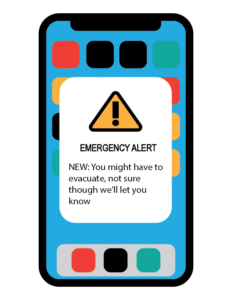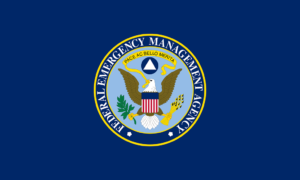
The recent California wildfires have been a great area of concern for residents of the state. The situation led to elevated levels of panic when Los Angeles (LA) County’s emergency alert system sent a false mass evacuation order to nearly 10 million residents. The alert was meant only for those in the immediate danger zones of the Kenneth Fire in Woodland Hills. Instead, people far from the flames were mistakenly told to leave their homes.
With the fires now contained, LA leaders are demanding answers. Several Southern California representatives signed letters to the county and other agencies responsible for the mistaken alert demanding a full report and investigation. The letters called out the misleading messages sent to the wrong locations, noting that repeated mistakes like these create “alert fatigue” and erode public trust.
The false alert should never have been allowed to reach so many people, and safeguards should have been in place to correct the mistake immediately. Inaccurate warnings cause mass confusion and weaken confidence in public safety measures. During the Eaton Fire, some Altadena neighborhoods received evacuation orders on time while others got them hours later.
The correction for the false emergency alert in the LA area was issued around 20 minutes later, stating that the alert was sent as an error. Additionally, residents as far as Long Beach, over 35 miles away from any of the fires, continued to receive emergency notifications. Mistakes like these, whether committed by technology or human error, have real consequences, as they reinforce a pattern of inefficiency that extends beyond just one incident.
Emergency systems need to be reliable, especially now. Wildfires are no longer isolated disasters—they are an expected part of life in California because of prolonged droughts and rising temperatures. Research has repeatedly shown a link between climate change and the increasing frequency of wildfires. As the risk grows, so does the need for a functional and trustworthy emergency response system. When people can’t rely on official alerts to be accurate, they are left to guess whether they are in danger, which can cost lives.
This is not the first time an emergency alert system has failed on a large scale. The 2018 false missile strike warning in Hawaii is a well-known example. This alert, which sent a message to phones asking people to seek immediate shelter from a missile, was caused by an employee pressing the wrong button, resulting in widespread panic. It took 38 minutes for a follow-up message correcting the initial alert to be sent.
In both the Hawaii and LA cases, a single mistake led to widespread confusion and fear. The fact that similar errors continue to happen means that whatever lessons were supposed to be learned from past failures have not been fully implemented.
Kevin McGowan, director of LA County’s Office of Emergency Management, said the county would suspend its alert system operated by Genasys – the company responsible for the technical error – and switch to one managed by the California Governor’s Office of Emergency Services (CalOES). The CalOES system could offer an extra layer of reliability, providing fail-proof alerts to mitigate future failures. However, simply switching platforms is not enough.

The Federal Emergency Management Agency (FEMA) controls the border emergency alertsystem across the United States. Currently FEMA’s wildfire emergency procedures website is under construction, alluding to changes in how the system will be managed based on the mistakes and areas of concern that have arisen through these wildfires. Because different broadcasters have varying policies on how messages are displayed, meaning the effectiveness of alerts is not consistent. FEMA does conduct system-wide tests, as required by the Integrated Public Alert and Warning System (IPAWS) Modernization Act of 2015, but testing alone does not ensure that real-life emergencies will be handled properly. The issues seen in LA show that updates to emergency response policies must go beyond just occasional testing.
Errors in emergency alerts are not always as simple as a technical glitch or a wrongly pressed button. In some cases the area where an individual’s phone was purchased or phone number was registered can impact the emergency alerts they receive. Research on west coast disaster warning systems has found that many residents, including international students and immigrants on visas, struggle to understand or interpret emergency warnings correctly. These gaps in public understanding need to be addressed alongside the technical flaws in the alert system.
Mistakes will always occur, whether due to human or technological error. But allowing them to go uncorrected is unacceptable and dangerous. An emergency alert system should not create additional chaos during an already high-risk situation. The ability to send out accurate, timely warnings is a fundamental public safety requirement, and it is impractical and reckless not to have safeguards in place to correct errors far quicker than they were in the past.







